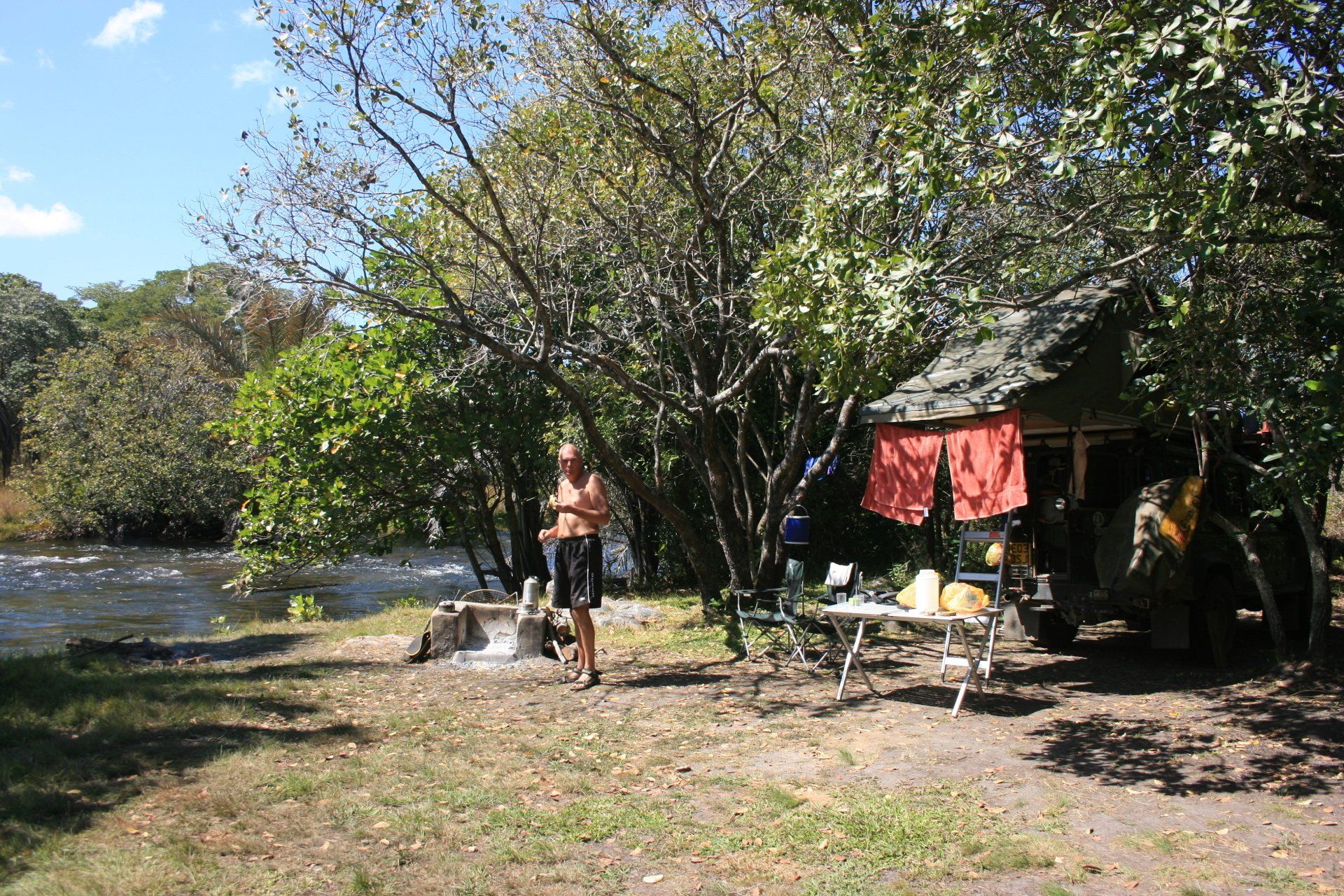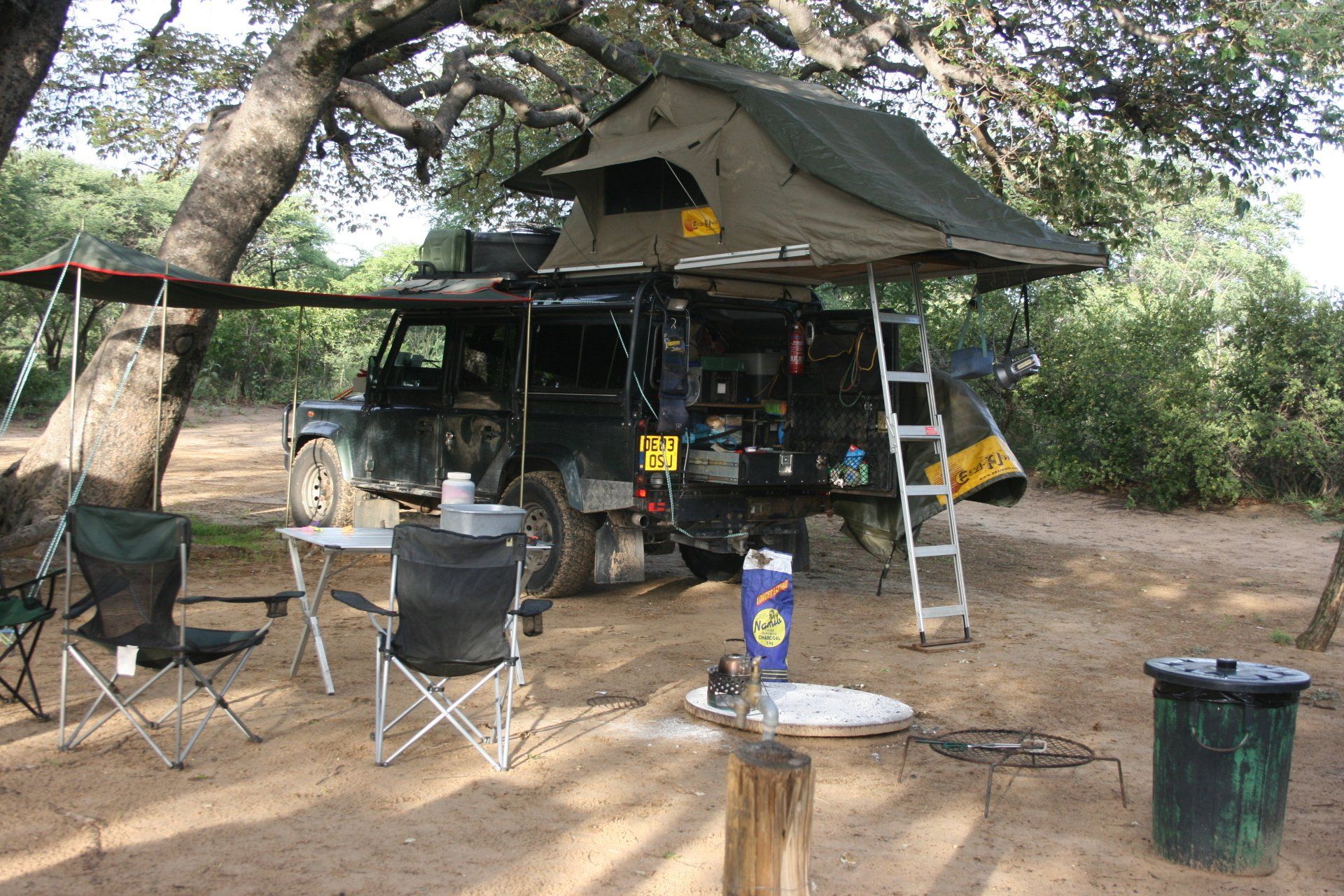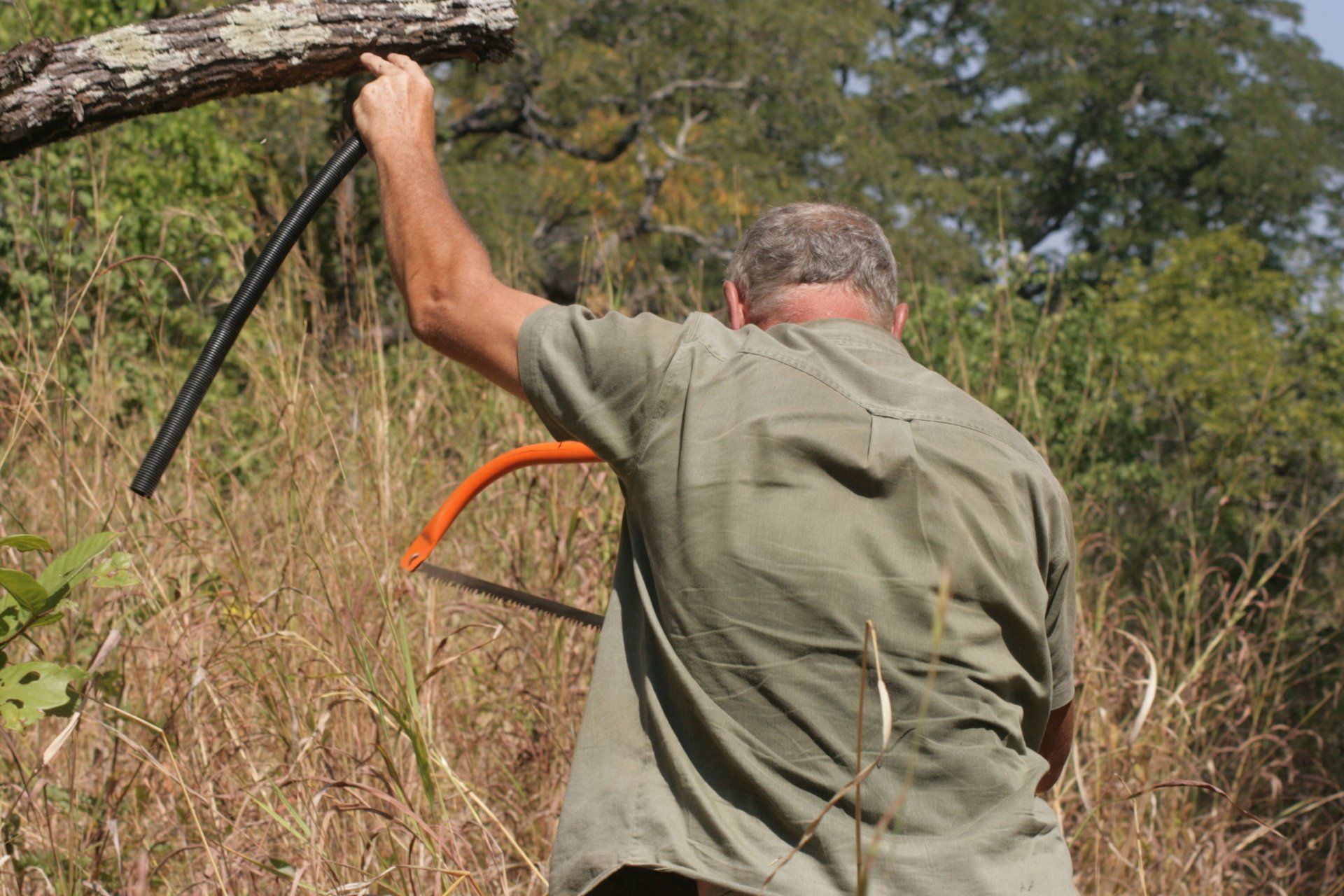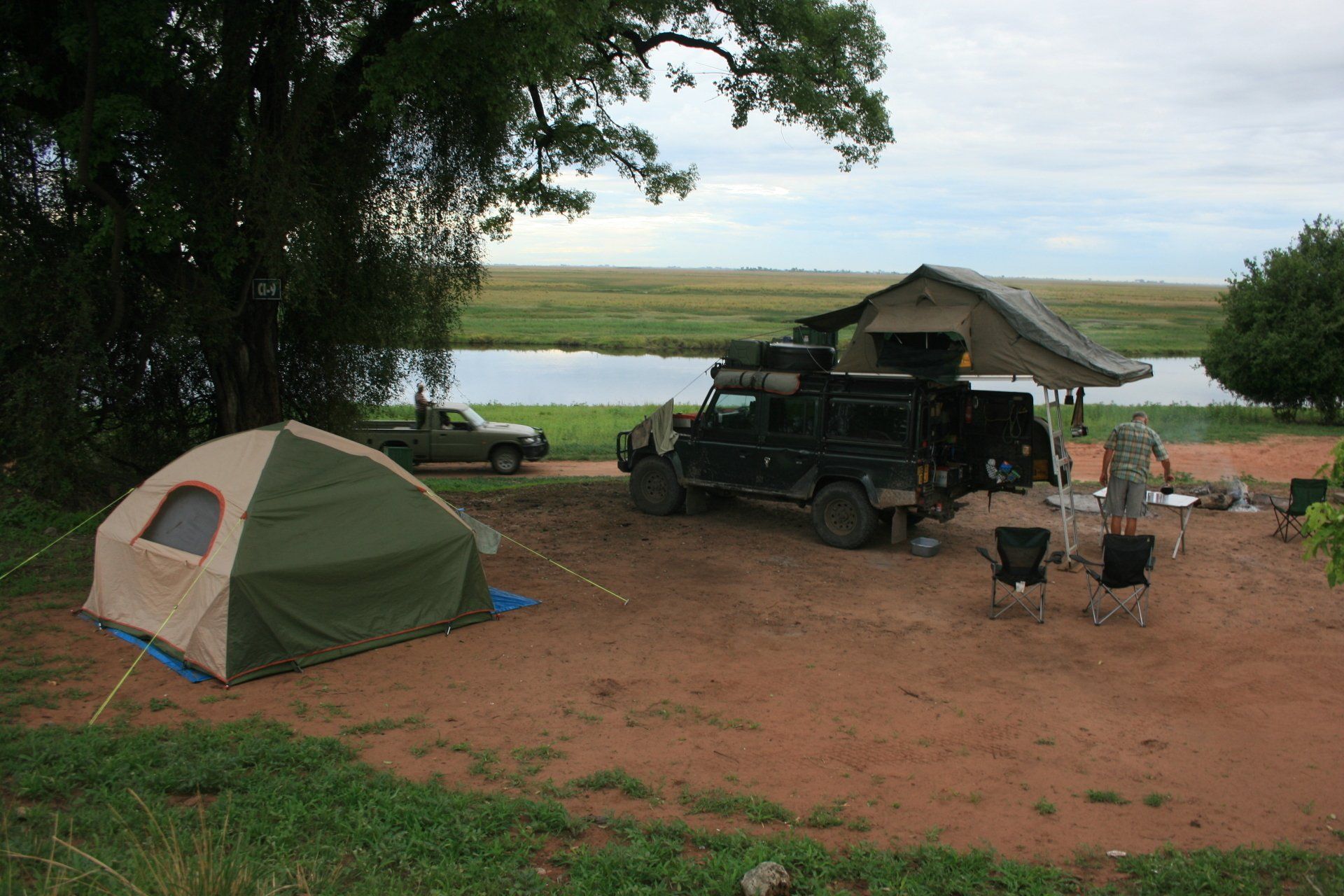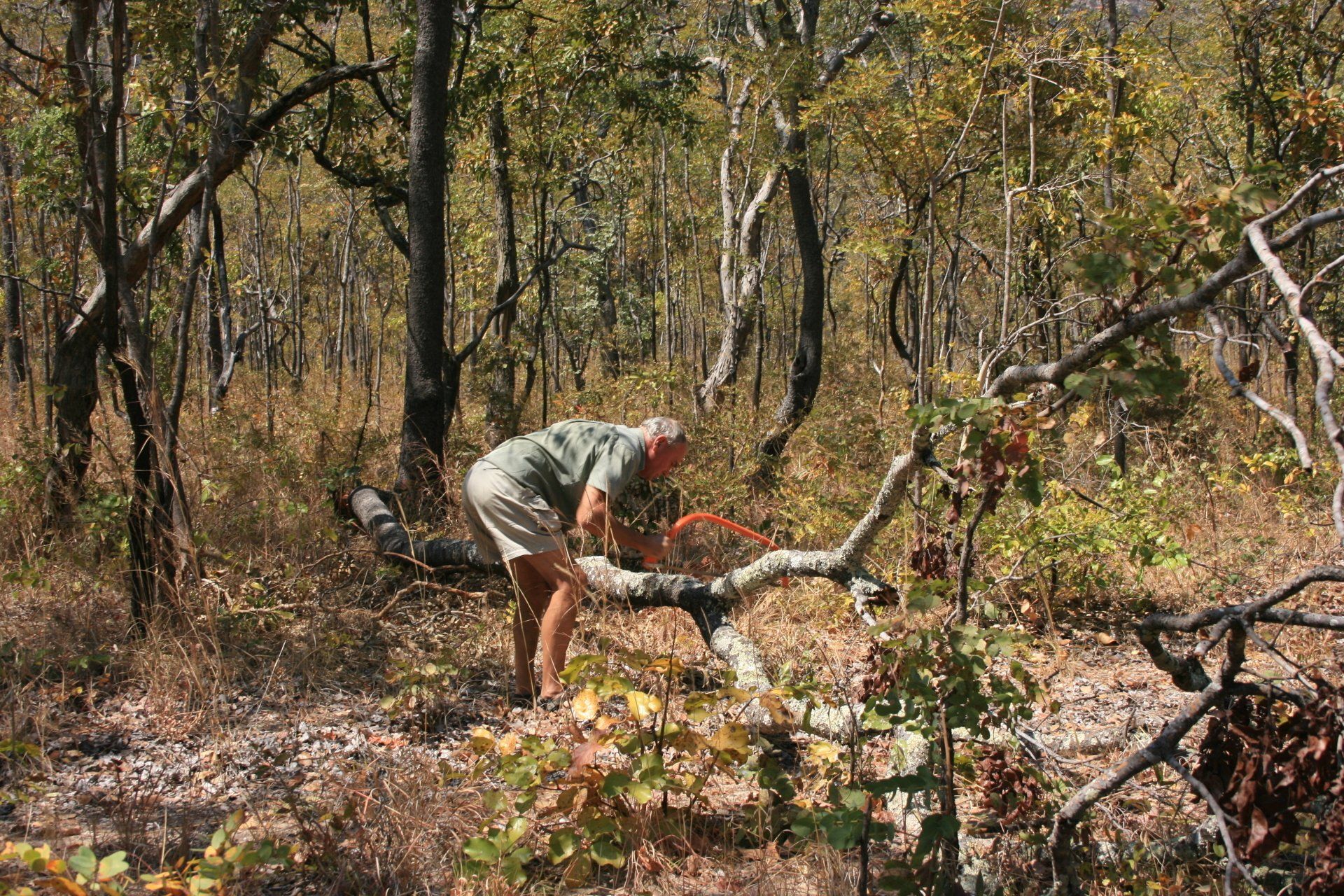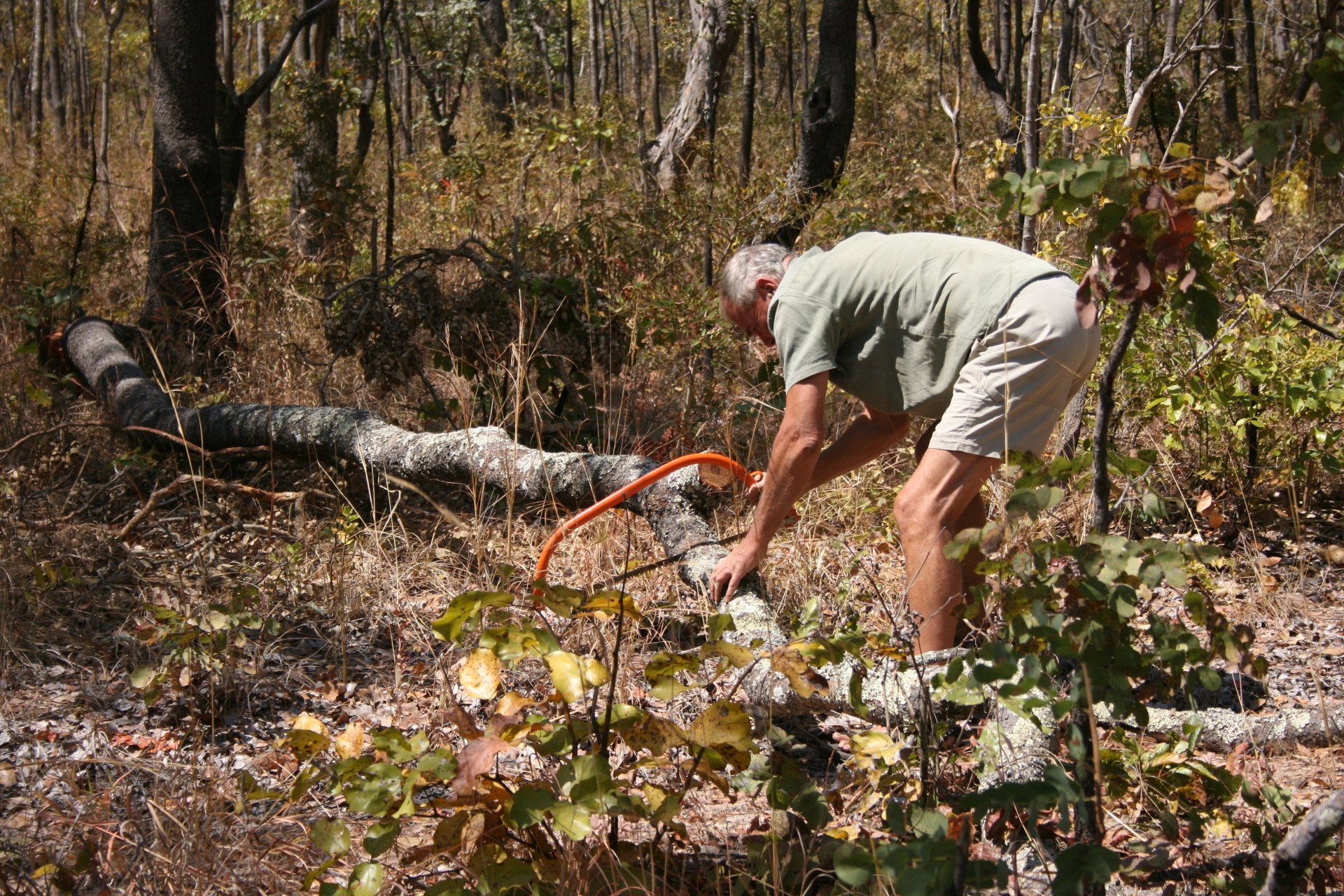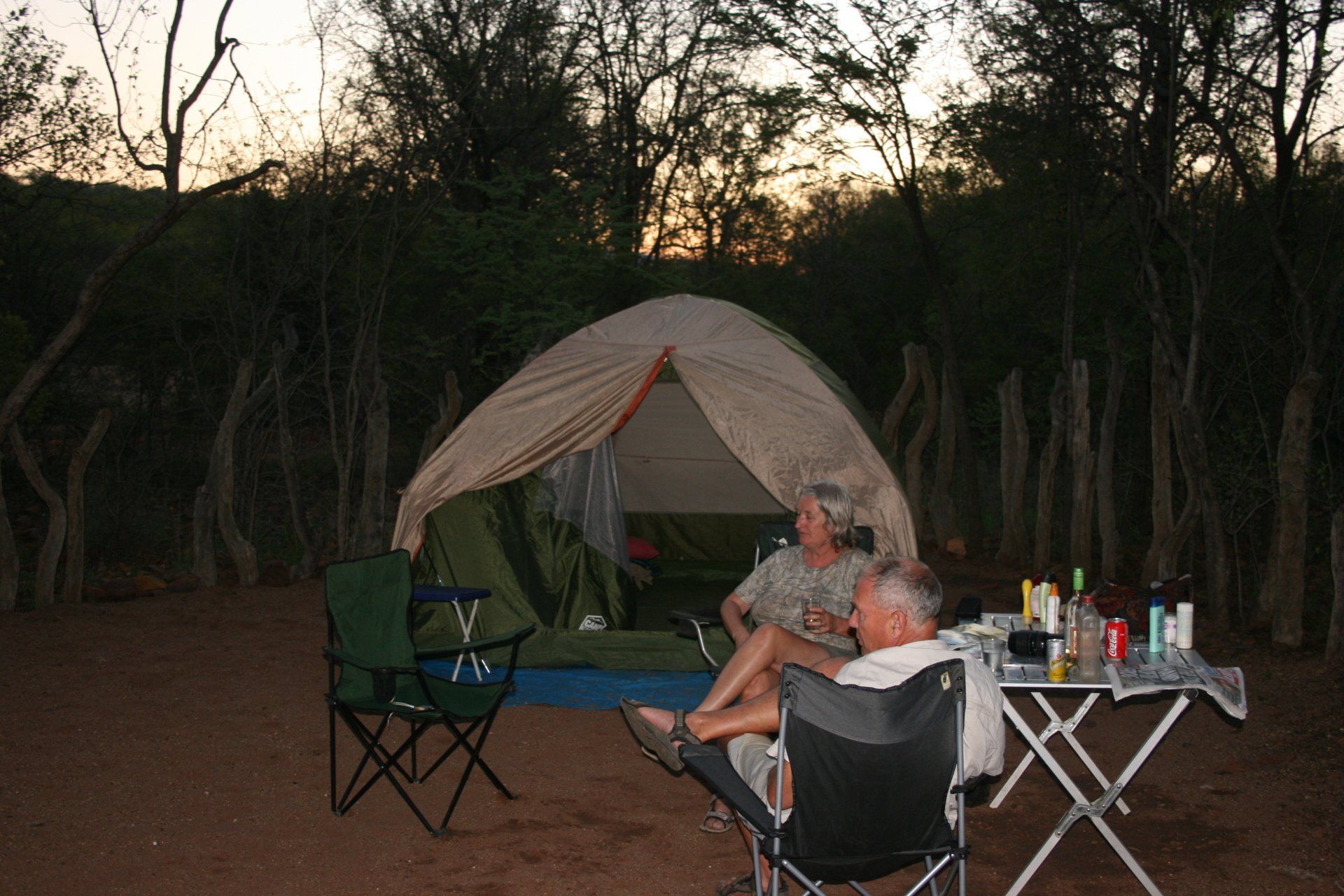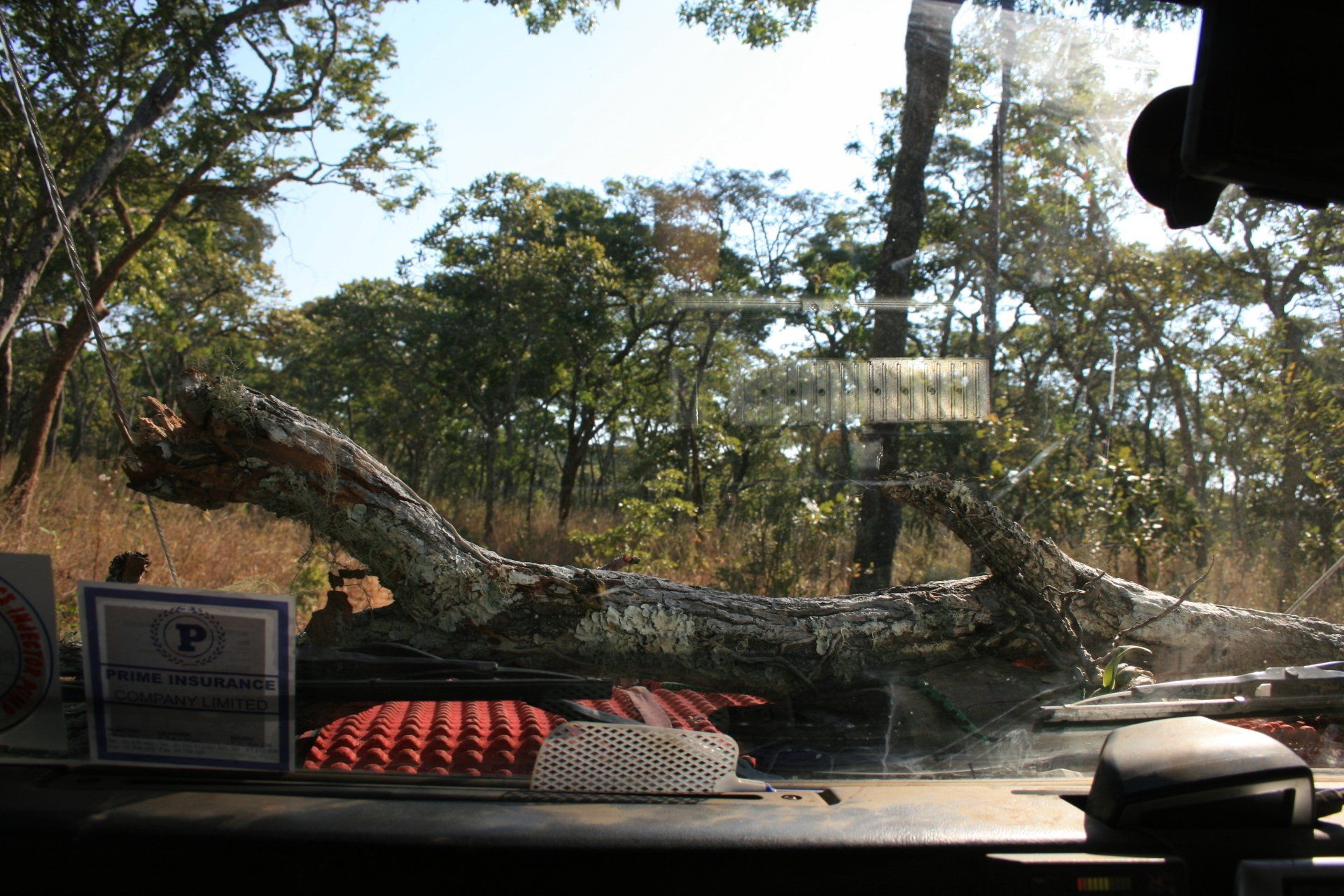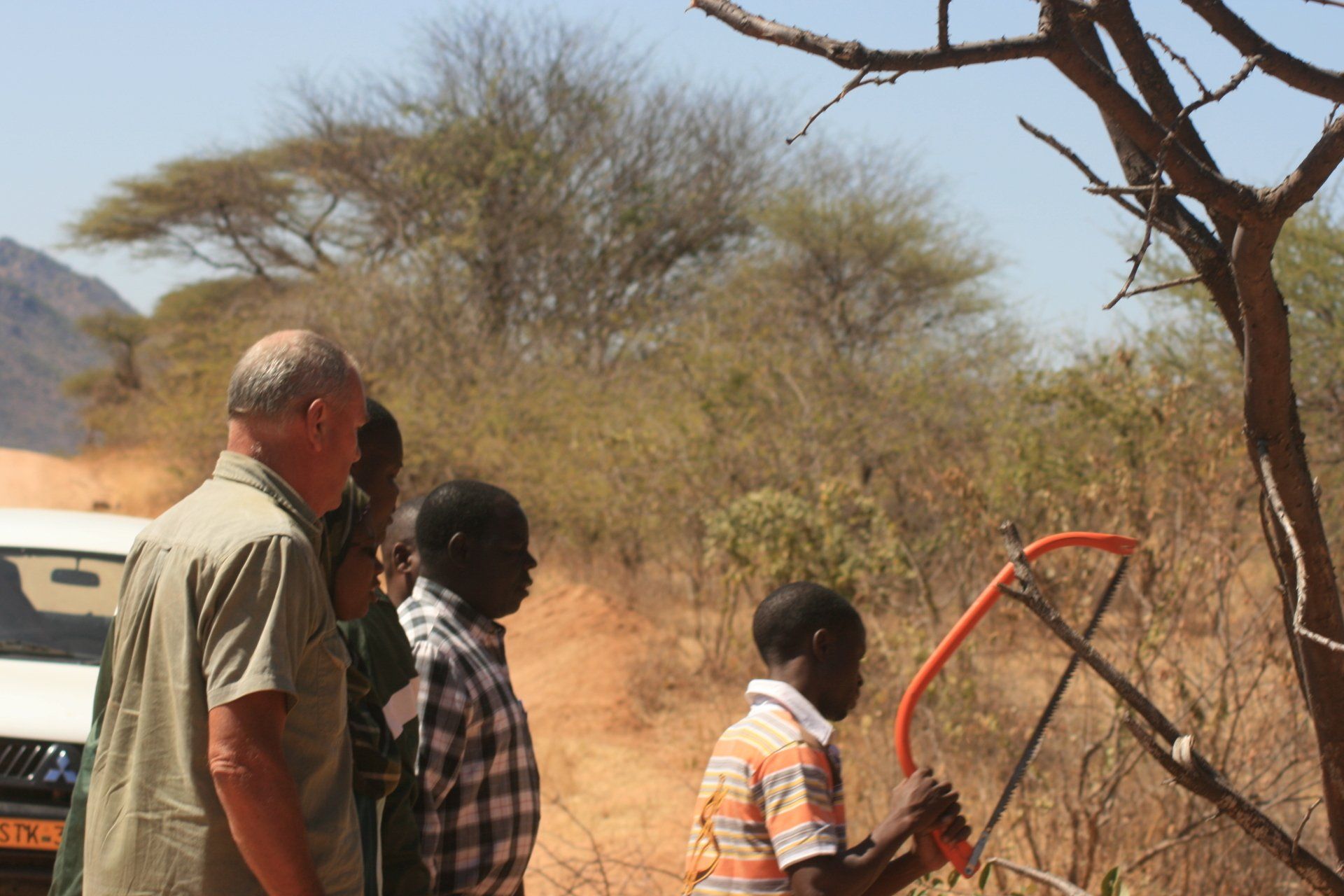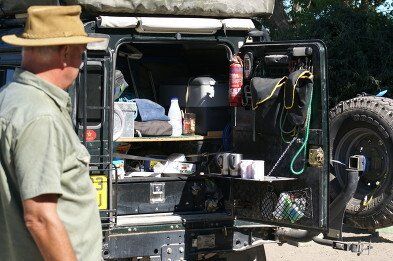Miscellaneous Modifications & Items
MISCELLANEOUS MODIFICATIONS & ITEMS
Rear Door
With no rear view through the back door thanks to the dog guard and window guard, both used to store items, the rear view mirror (possibly required for Kenya or so I was told?) and wiper and motor were removed; the wiper, heated rear window and rear washer switches were utilised as switches for the additional lights. The standard rear door card was replaced with a chequered panel which needs to clear the central door locking mechanism - I packed ours out with square section aluminium tubing. To which a drop-down table and other items were attached – onto the window guard all manner of items were attached or hung; extinguisher, weather station, wash bags, bungies, hooks, to name but a few. Storage netting was also attached for extra storage.
Roof Tent Canopy
When extended, the canopy support arms served as useful items to hang from hooks all manner of things such as torch, shoes as getting into bed and with a line across the end, a washing line. Best to use the off-side as the door reduces the chances of banging one’s head.
Door Seals
Be prepared for dust to get everywhere! We didn’t have air conditioning but didn’t miss it as we were happy to have the front flaps and windows open, particularly in game parks: shut windows would mean we couldn’t take in the smells and sounds of Africa. It also means photography is not at its best through glass. We lived with dust in the front of the vehicle but endeavoured to keep it out the rear where the food etc., was stored. I ended up putting heavy duty dust seal on the back door to supplement the standard door seal; that helped, a little.
Fans
In the absence of air conditioning, two small 12 volt fans were set up in the roof on the internal section of the roll bar behind the front occupants to provide cooling when the windows were shut, for example in heavy traffic in towns or where there were tsetse flies (we kept a couple of fly swats for such occasions – they fit nicely in the screen vents). Occupants with long hair beware of nearby fans!
Rear step
With the vehicle being so high it was difficult to reach to the back of the rear shelf and also to look in the fridge; a double step bolted to the tow bar solved this problem.
Tow Bar
The vehicle came with a Land Rover tow bar but the standard tow ball was replaced with a tow ball & jaw and pin one. This has a sturdy pin in addition to the usual ball and allows a safer and more secure means of attaching a rope or strap. It does, however, make it the lowest point on a gradient, but something has to be and this item was quite robust.
Vehicle Seating
We had investigated replacing the front seats with what we thought would be more comfortable and durable ones: as it was the standard ones were very comfortable and showed no signs of wear – very glad we didn’t waste money on fancy ones.
The inward facing rear seats were removed very early on in the kit-out but the middle ones were retained for visitors.
GB Stickers
Handy to have a large ‘GB’ sticker (or one for your country) on the back of the vehicle so other motorists and travellers know where you are from as the registration plate will fool most of them – in any event it will lead to a lengthy conversation about one’s travels!
Warning Triangles
Several countries require the carrying of two warning triangles with Zambia stipulating they should be metal with reflective white on the rear – our two plastic ones seemed to suffice but they will be checked so have them handy.
Axe
We took a small ‘full’ sized one that wasn’t really man enough as a proper axe as it was more like a large chopper. Not used that much.
Sledgehammer
Taken primarily for driving in the ground anchor poles; wasn’t used and the sledgehammer was superfluous in the end.
I would now invest in a combination set-up with a single handle and interchangeable axe, sledgehammer and pick axe heads.
Long-handled lump hammer
A very useful piece of equipment for use in a variety of tasks including putting in long tent pegs.
Bow Saw
Used frequently and probably essential for firwood & clearing fallen trees blocking the way: worth taking a full sized one and stored readily to hand – take a spare blade.
Machete
Taken but not used much.
Ground Tent
As we were having visitors we needed additional accommodation. We shipped a small pop-up tent but that didn’t survive the journey. This was replaced in Botswana with a bigger tent that was ideal but stored in a small bag: this survived two attacks by baboons, thanks to duct tape, but gave up the ghost in the strong winds of Namibia. We had difficulty replacing this one with a similar replacement in South Africa and settled for one brought out by the last guests!
Survival Box
Conscious that we would spending much of our time in remote areas where anything could happen we made up a ‘survival’ box; a small military ammunition box (with all stickers removed!) with various survival items* inside that could be grabbed in the event of a hasty abandonment of the vehicle, hopefully also grabbing the sat phone.
* Light sticks; wind-up torch; miniature bottles of brandy & whisky; parachute cord; knife; candle; note pad & pencil; steel firelighter; glass lens; scissors; wire saw; matches; compass; wipes; some field dressings; a couple of Swiss Army emergency camp stoves; two collapsible cups; small plastic sealed container; small SAS Survival Guide; a week’s supply of our medication + copy of prescription.
Really useful box
One of the flat wolf boxes, easily accessible, held plastic containers in which were kept some of the aforementioned items and things like spare matches, lighter fuel, spectacle repair kit, spare batteries, handy hooks, sewing kit, including strong needles and thread for repairs to awning etc., pens, note pads, vacuum flask, additional first aid, hot water bottles, cleaning items not used daily, scissors, citronella night lights, etc. Judi usually remembered what was in this box and impressed quite a few people by quickly producing what was needed.
Knives
I kept a large hunting knife hidden next to the front cubby box and a smaller one in the sun visor on the basis that if I needed them it would be an emergency and therefore needed to be readily to hand – fortunately I didn’t as it happens. The hunting knife also came to bed with us.
In addition to such defence items, the solid steering wheel lock stored next to the handbrake when on the move, if required would serve a useful purpose.
Catapult
Taken with a view to scaring off, in particular, baboons and monkeys that can be bold and, in the case of baboons, dangerous. I also took ball bearings for ammunition but never used them in earnest, preferring to use stones aimed in their general direction instead – a well-aimed ball bearing would be quite capable of killing a fair sized animal!
Rubber snakes
Supposedly good at scaring off baboons and monkeys - doesn’t work.
Securing methods
The three most important items for any expedition have got to be: DUCT TAPE, POP RIVETS & CABLE TIES.
Take plenty of assorted ropes, assorted cable ties, ratchet straps, straps, bungee straps, duct tape, crocodile clips and anything else that could come in handy for securing or repairing anything.
Spares and Tools
See HERE
